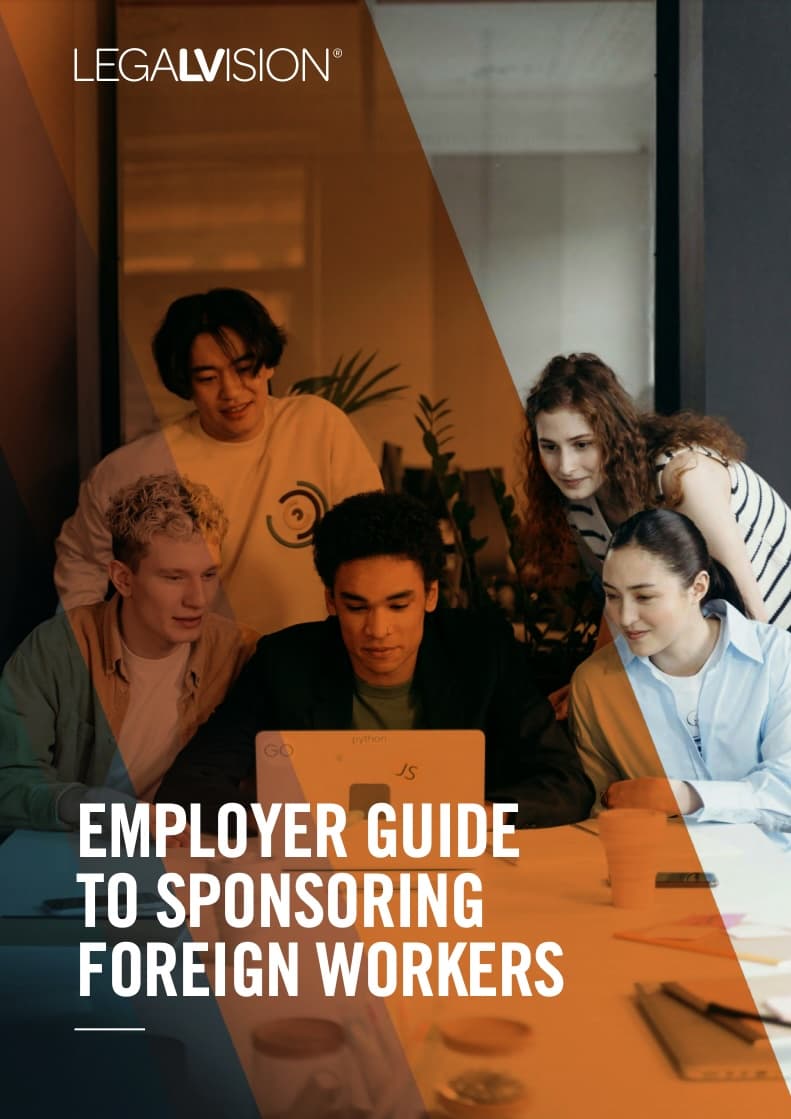For refugees settling in Australia, ensuring they find meaningful employment is essential to their ability to resettle and integrate into their new homeland. One initiative designed to aid refugee employment is Australia’s Skilled Refugee Labour Agreement Pilot (SRLAP). This program is designed to harness the talents of skilled refugees while addressing labour shortages in key sectors. This article delves into the purpose, criteria, and process of the SRLAP so that you can make informed decisions when seeking to sponsor skilled refugees.
Purpose and Objective of the SRLAP
The SRLAP is designed to achieve dual objectives, being to:
- provide skilled refugees with opportunities for employment and integration into the Australian workforce; and
- address skill shortages in specific industries.
By tapping into the talent pool among skilled refugees, the program aims to bolster economic growth and enrich the cultural fabric of Australian society. It facilitates the employment of skilled refugees with valuable expertise, enhancing the economic prospects of individual refugees and fostering diversity and innovation within the workforce.

Sponsoring overseas workers as an Australian business is complicated. Let us simplify it for you with this free employer guide.
How Does It Work?
The Skilled Refugee Labour Agreement permits Australian businesses endorsed by Talent Beyond Boundaries (TBB) to sponsor approved skilled refugees and displaced persons on temporary or permanent visas through the following employer-sponsored programs:
- subclass 186 direct entry stream;
- subclass 482; and
- subclass 494 (and then via subclass 191 for permanent residence).
To obtain TBB endorsement, your business needs to:
- be operating for at least 12 months; and
- demonstrate financial viability.
You will also be subject to sponsorship obligations that pertain to all sponsors accessing the employer-sponsored program.
Concessions
This program offers several concessions that benefit your business and applicants. These include that:
- labour market testing is not required under the SRLAP, where the endorsement of the business by TBB replaces this requirement;
- the minimum English language requirements have been reduced to ‘Functional English’ level, equivalent to an IELTS score of 4.5 averaged across all bands; and
- there are no mandatory skills assessments or minimum work experience prerequisites. The sponsoring business is responsible for ascertaining whether the skilled refugee or displaced person possesses the necessary skills and qualifications for the nominated occupation.
You also have the flexibility to nominate any occupation listed in the Department’s Skilled Occupation List or the National Skills Commission’s 2022 Skills Priority List. Additionally, if you nominate a skilled refugee or displaced person for an ANZSCO Skill Level 3-5 occupation, you may be eligible for a 10% concession to the Temporary Skilled Migrant Income Threshold (TSMIT). This is only applicable if you can demonstrate that the annual earnings of an equivalent Australian worker would fall below the TSMIT.
Under an extended age limit, you can now sponsor individuals up to 55 years of age for the Employer Nomination Scheme and Subclass 494 Skilled Employer-Sponsored Regional visas. The Temporary Skill Shortage visa imposes no age limit.
Occupations
In consultation with various stakeholders, a combined occupation list for this program has been developed and referenced from the:
- Skilled Occupation List;
- National Skills Commission’s Skills Priority List 2022; and
- additional ANZSCO and non-ANZSCO occupations, as outlined below.
The additional ANZSCO occupations are:
- irrigationist;
- irrigationist assistant;
- machinery manager;
- Machinery supervisor; and
- seafood process worker.
There are also additional non-ANZSCO occupations, which are:
- agriculture technician;
- dairy cattle farm operator;
- facility supervisor;
- horticulture grower;
- horticulture section manager;
- machinery manager;
- maintenance electrician;
- nursery supervisor;
- production horticulture supervisor;
- section supervisor;
- trade waiter;
- cold storage manager;
- facility plant manager;
- horticulture farm manager;
- horticulture research and development officer;
- skilled meat worker;
- machinery supervisor;
- mechanic;
- production horticulturist;
- protected cropping grower; and
- senior nurseryperson.
Process
Participating in the SRLAP involves several steps. Firstly, your business should request endorsement from TBB, ensuring that you satisfy the relevant requirements. These requirements are that your business must:
- be operating for at least 12 months; and
- demonstrate financial viability.
You must then request a Skilled Refugee Labour Agreement. This involves demonstrating a:
- genuine need for workers in designated occupations; and
- a commitment to providing meaningful employment opportunities.
This is required to enter into a labour agreement with the Australian government. As a part of this agreement, you must outline the terms and conditions of employment for participating refugees.
Next, you should submit a nomination application for the appropriate visa program under which you are seeking to sponsor skilled refugees. This could be either the subclass 482, 494 or 186.
Once you send an employment offer to a skilled refugee, they can apply for a visa under the SRLAP. This visa will grant them permission to work in Australia for the duration specified in their employment contract. Additionally, refugees and their families may be eligible for settlement support services to facilitate their transition to life in Australia.

Sponsoring overseas workers as an Australian business is complicated. Let us simplify it for you with this free employer guide.
Additional Support Programs
Once in Australia, refugees are encouraged to participate in additional support programs aimed at enhancing their:
- skills;
- language proficiency; and
- understanding of Australian workplace culture.
These programs are vital in promoting successful integration and long-term employment outcomes for refugees.
Throughout the process, ongoing monitoring and evaluation mechanisms are in place to assess the program’s effectiveness and make necessary adjustments. This iterative approach allows for continuous improvement and optimising the program’s outcomes.
Key Takeaways
The SRLAP represents a proactive approach to addressing both labour shortages and the resettlement needs of skilled refugees in Australia. By harnessing the talents of skilled refugees, the program enriches the Australian workforce and promotes social cohesion and inclusivity. As an eligible employer, you can sponsor skilled refugees under this program and effectively fill vacancies in your business. However, you must meet certain criteria and follow a specific process to do so.
If you have any questions regarding the SRLAP, our experienced immigration lawyers can assist as part of our LegalVision membership. For a low monthly fee, you will have unlimited access to lawyers to answer your questions and draft and review your documents. Call us today on 1300 544 755 or visit our membership page.
We appreciate your feedback – your submission has been successfully received.











